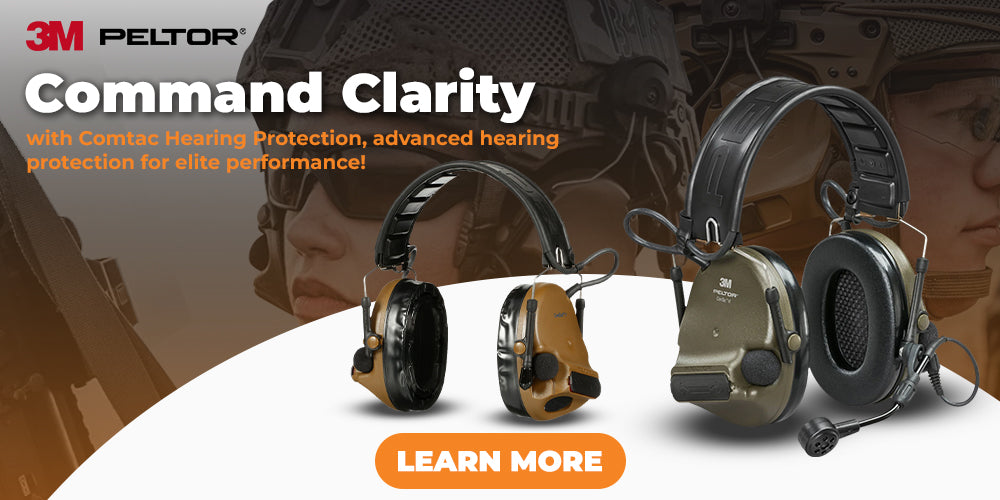
Supplied Air Respirators



















































Supplied air respirator systems provide a constant supply of fresh air to the wearer, providing a higher level of respiratory protection in hazardous environments. Supplied air respirators offer reliable protection against harmful airborne particles for the construction, mining, and other industrial settings.
Respirator users will enjoy the comfort of a supplied air respirator system! Supplied Air systems can allow the user to heat or cool incoming air by as much as 50 degrees, providing for a much more comfortable experience. Additionally Supplied Air Respirators provide for the ability to pull air from either contained sources, or sources outside of the area of contamination.
Allegro Supplied Air Systems
Allegro systems come fully equipped with a compressor, mask, hose and other material necessary to use your system immediately.
3M Supplied Air Systems
3M SAR systems come in a variety of configurations and allow for Supplied Air Systems that monitor for CO Filtration and monitoring. And, if you need it, a CO Monitor retrofit kit that allows you to monitor CO Levels. 3M Supplied Air Respirators also come in BumpCap, Hard Hat, Helmet and hood configurations depending on your job site needs.
The Importance of Clean Air
Breathing clean air is essential when working in contaminated areas. Supplied Air Respirators (SAR) are often used for contact with hazardous materials such as lead, asbestos, or aerosol paint. Supplied Air Respirators pump clean air from a compressed air source through a hose and into the facemask. Positive pressure to the mask means less chance of contaminants getting in. The clean air source can be from a high or low pressure compressor or an air cylinder. Supplied Air Respirators are perfect for confined spaces as mobility is limited by the length of the hose connecting the user to the clean air source.
FYI - The EPA recommends that all painters wear Supplied Air Respirators when spraying paints containing toxic chemicals such as isocyanate.
Note: Supplied air respirator system headgear, breathing tube, air control valve, and compressed air supply hose are required parts in a NIOSH-approved system. Any NIOSH certification appearing on 3M components is strictly limited to use in an approved air system and only in full accordance with the specifications and limitations under said approval. NIOSH certified complete assemblies only, not sub-assemblies.
FAQs
What are supplied air systems, and why are they important?
Supplied air systems are respiratory protection devices that supply clean air to the user from a separate source, such as a compressed air tank or an ambient air pump. They are important in industries where workers may be exposed to hazardous airborne particles or gases, such as mining, construction, or industrial manufacturing. Supplied air systems provide a reliable and consistent source of clean air to protect workers from respiratory hazards.
When is a supplied air system necessary?
A supplied air system may be necessary in any situation where a worker is at risk of inhaling hazardous airborne particles or gases. This includes environments where there is a risk of oxygen deficiency, high concentrations of toxic gases or vapors, or particulate matter that can cause lung damage or disease. A safety professional can evaluate the hazards of a specific workplace and recommend appropriate respiratory protection measures.
How do I choose the right type of supplied air system?
Choosing the right type of supplied air system depends on the specific hazards of the workplace and the type of work being performed. Some factors to consider include the level of respiratory protection required, the duration of the work, the environment in which the work is being performed, and the physical demands of the job. A safety professional can help you determine the appropriate type of supplied air system for your needs.
What are the benefits of using a supplied air system over other types of respiratory protection?
Supplied air systems provide a reliable and consistent source of clean air, unlike other types of respiratory protection that rely on filtering air through a mask or respirator. This can provide better protection against hazardous airborne particles or gases, as well as increased comfort for the wearer. Supplied air systems can also allow workers to perform tasks that would be difficult or impossible with other types of respiratory protection, such as working in confined spaces.
What are some common components of a supplied air system?
Common components of a supplied air system include an air source, such as a compressed air tank or ambient air pump, a regulator to control the flow of air, a breathing tube or hose, and a facepiece or hood to deliver the clean air to the user. Other components may include filters, alarms to alert the user to low air supply or other hazards, and communication devices to allow workers to communicate with each other while wearing the system.




